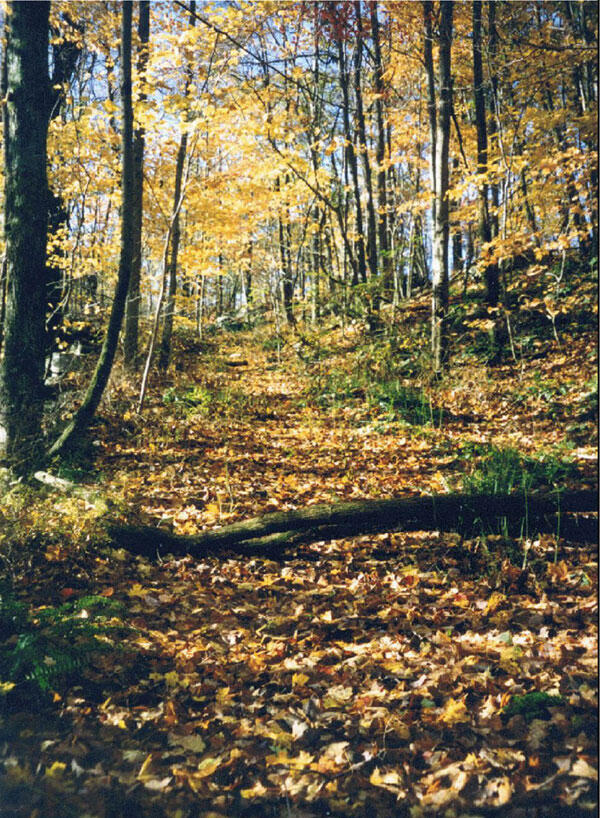by Hans DePold, town historian
(Published in the Bolton Community News, December 2002)
I recently submitted a seven-page report to the State Historical Preservation Office (SHPO) asking them to recommend to the National Park Service that Bolton's abandoned Bailey Road be listed in the National Register of Historic Places. SHPO met October 31 and voted to make the recommendation.
The earliest settlement road from the east entered Bolton through Bailey Road. During the Revolution this road was one of the few inter-colonial routes available. Because the British had discouraged the colonies from trading with one another, this route (far from any naval or troop concentrations) became the safe route for illegal inter-colonial commerce and the safe route that the patriots used when they deployed troops. The Connecticut forces, the Continental Army, the French Army, and Governor Trumbull often used the road.
The main road through Bolton in those days was the one we now call the Washington Rochambeau Revolutionary Road. The earliest detailed handwritten pocket maps found in the Brown University archives show our Bailey Road was the original postal route into Bolton from both Boston and Providence. That map shows the two earliest postal routes converged at Bailey Road.
Bailey Road was built and maintained by periodically using teams of oxen to drag large flat stones along to grade the road. Today the horse, oxen, and tractor dragging contests at state fairs are an offshoot of this once important early business of road maintenance.
Bailey Road is in an important recognized Bolton wetland complex. The muddy and stony Bailey Road fell out of use after having broken many a wheel, including the carriage wheel of General Rochambeau. Rochambeau had an Andover wheelwright awakened in the middle of the night on that occasion. Rochambeau traveled on Bailey Road twice in September of 1780 for the Hartford Conference where he first met General Washington. Washington used it twice in March of 1781 when, accompanied by Alexander Hamilton, he visited Rochambeau at Newport. Rochambeau used it twice again in May of 1781--for the Wethersfield Conference, and then to lead the French Army in June of 1781 and return with the French army in November of 1782.
Others known to have traveled on Bolton's Bailey Road include Lafayette, General Chastellux, General Varnum, General Henry Knox, the Duc de Lauzun, Benjamin Franklin, Nathan Hale, private Greenman, and several other American and French officers.
By 1781 the French maps show the Middle Boston Post Road no longer used Bailey Road but the Providence road still did. By 1781 the French Maps show the Middle Boston Post Road came in on Toomey Road and converged with the route from Providence at the center of Bolton about 2 miles from where it earlier had converged with Bailey Road.
The turnpike era began in the early 1790s. The Norwich Turnpike then came in on Watrous Road instead of Bailey Road. The Boston Turnpike then went through Bolton Notch on what today has become Route 44. That means that Bailey Road became a local road. Eventually the steepness and wetness of Bailey Road caused it to be abandoned before gravel, widening, or any other road improvements were invented. It is pristine, as it was when the patriots used it.
The abandoned portion of Bailey Road runs from the north border of the Bolton High School property to the greenway that runs along the abandoned railroad line. Its proximity to Bolton High School means that preserving it as a valuable archaeological source will create a valuable historical, archaeological, and environmental resource adjacent the Bolton School system. It is a path that can be accessible and eligible for Tea21 and other grants if it gets on the National Register.
The National Park Service will decide early next year if Bailey Road makes it onto the National Register of Historic Places. I expect it will.
